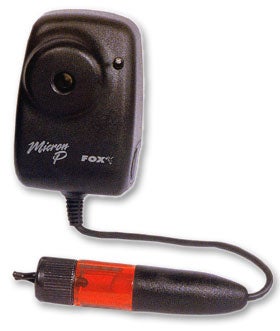There are not many conservation-minded pike anglers around these days who don’t use some kind of drop-off indicator when fishing for predators, especially pike. Okay, a few pike anglers do prefer other methods, which doesn’t make them all irresponsible, just that they believe their own method is better. But I’m not one of them. I firmly believe that a properly designed, correctly set drop-off indicator is practically foolproof. Not perfect maybe, but certainly the nearest thing we’ve got to perfection just yet. There are two types of drop-off alarm. One is a simple, stiff arm that sets the alarm off when an up or down movement of the arm triggers a rocker switch. The other, and most popular and reliable type, uses a mercury tilt switch in the head. This is a globule of mercury, otherwise known as quick-silver or liquid metal, that rolls in a cavity, the rolling mercury completing the circuit and triggering the alarm. Used, incidentally, by terrorists to trigger car bombs and as a consequence mercury tilt switches were hard to come by during the height of the troubles in Northern Ireland, as many of us who used to make our own alarms will testify. A properly designed drop-off indicator should have the following points:
I always used to make my own drop-off alarms when they were not commercially available, but the emergence of the Fox Microns P’s have made DIY alarms totally unnecessary. Unless you’re a DIY enthusiast of course. I have no hesitation in recommending the Fox Micron P. It meets all the points mentioned above and I’ve been using mine almost since they first hit the market, in all kinds of weather conditions, and they have never let me down. They are easy to set up, reliable, loud at 100 decibels (perhaps too loud when you’re no more than a reasonable distance from your rods), and the line clip is easily adjustable to suit any line diameter and pull from the wind or undertow. It comes with a padded, protective pouch and retails at £ 24.99. |
Welcome!Log into your account










 In use it is important to use a lead heavy enough to enable you to tighten down sufficiently. The alarm should be positioned so that the electric lead to the head is sloping slightly downwards, but the head itself lies horizontal or very slightly upwards so that the slightest slackening of the line (or of course if the line is pulled from the clip) the alarm is triggered.
In use it is important to use a lead heavy enough to enable you to tighten down sufficiently. The alarm should be positioned so that the electric lead to the head is sloping slightly downwards, but the head itself lies horizontal or very slightly upwards so that the slightest slackening of the line (or of course if the line is pulled from the clip) the alarm is triggered.


